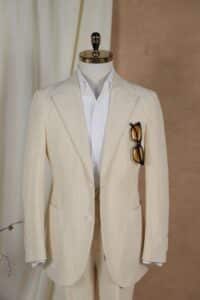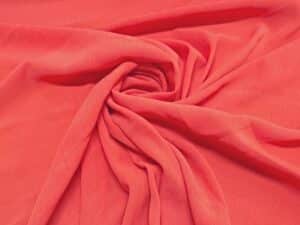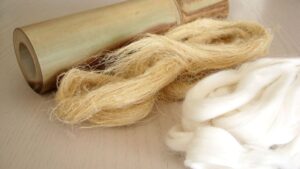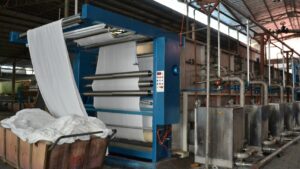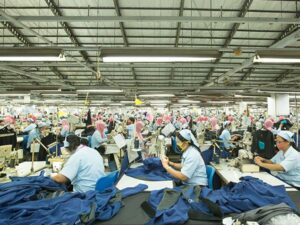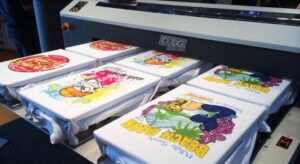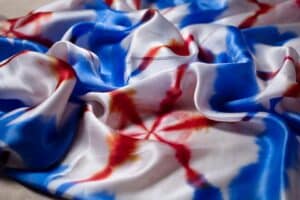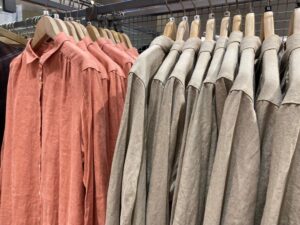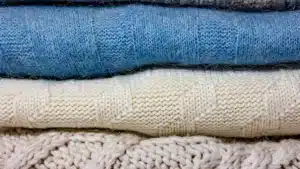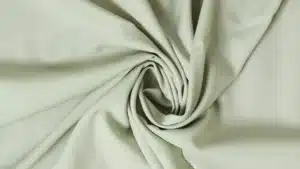
Modal fabric is a material made from beech tree pulp. It feels silky and light, making it great for comfort. Its softness, breathability, and ability to keep moisture away improve your experience. These features make it perfect for clothes and home items.
Modal is a genericized trademark of Lenzing AG, used for (viscose) rayon which is stretched as it is made, aligning the molecules along the fibers. In Chinese, we call Modal as 莫代尔 (mò dài ěr).
Its eco-friendly way of being made attracts people who care about the planet. The growing need for modal fabric shows this trend. For example: the market was worth $1.2 billion in 2023 and might reach $2.1 billion by 2032. This growing demand shows its importance in comfy and eco-friendly fashion.
Key Takeaways
Modal fabric feels very soft and lets air through. It is great for comfy clothes and home items.
It soaks up more sweat than cotton, keeping you dry and cool during exercise or daily tasks.
Modal is good for the planet. It comes from beech trees and uses less water than cotton, helping the environment.
This fabric is tough and keeps its shape, so your clothes stay nice even after many washes.
Picking modal fabric helps you stay comfy and protects nature. It’s a smart pick for your closet.
What Makes Modal Fabric Special?
Softness and Smooth Feel
Modal fabric is known for being super soft and silky. It feels cool and smooth on your skin, making it great for clothes and bedding. Unlike cotton, which can feel heavier and rough, modal feels like silk but lasts longer. Even after many washes, it stays soft and comfy.
Material | How Soft It Feels | How It Feels to Touch |
|---|---|---|
Modal | Very soft, like cotton or silk | Silky and cool on skin |
Cotton | Soft but heavier, less smooth | Can feel rougher than modal |
Silk | Very soft but delicate | Needs extra care to stay soft |
If you want soft and useful fabric, modal is a great pick.
Breathable and Keeps You Dry
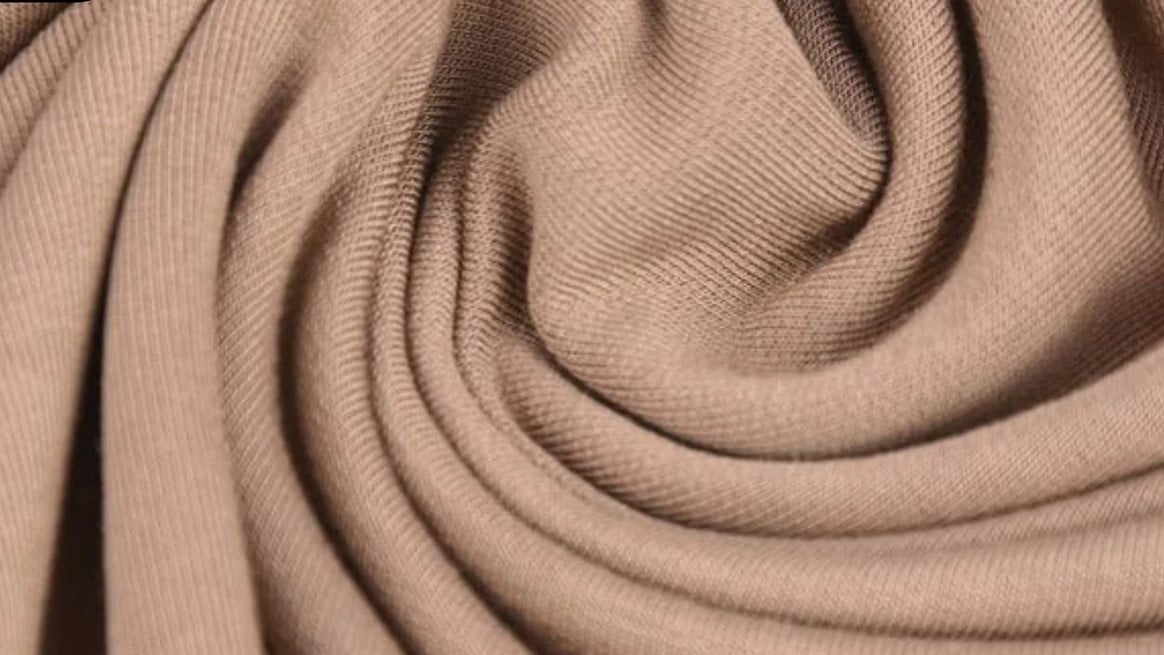
Modal fabric keeps you comfy by pulling sweat away from your skin. It lets air flow easily, so you stay cool and dry all day. Modal absorbs 50% more sweat than cotton, making it great for workout clothes and underwear.
Modal pulls sweat away, keeping you cool and dry.
It absorbs more sweat than cotton, making it breathable.
Its moisture control is perfect for medical wear and daily outfits.
Whether you're exercising or relaxing, modal keeps you fresh and comfy.
Strong and Keeps Its Shape
Modal fabric is soft but also very strong. It doesn’t shrink, wrinkle, or get fuzzy, so your clothes stay smooth and in shape. Cotton can lose its softness and shape after washing, but modal stays flexible and strong.
Modal stays strong even after many washes and wears.
It doesn’t wrinkle or get fuzzy, staying neat.
It’s tougher than regular rayon, great for items used often.
If you need long-lasting clothes that stay comfy, modal is a smart choice.
How Is Modal Fabric Made?
The raw material of Modal fiber is derived from beech trees. It is processed into a pulp solution and then manufactured through specialized spinning techniques, resulting in a type of cellulose fiber. Therefore, like cotton, it belongs to the category of cellulose fibers and is a pure natural fiber.

Getting Beech Tree Pulp
Modal fabric starts with beech trees, which grow quickly and need little water. These trees spread on their own, so less farming is needed. This helps the environment more than crops like cotton. But cutting too many trees can harm forests. Companies often use eco-friendly methods to keep beech trees growing. When you pick modal fabric, you help save water and use renewable resources.
Turning Pulp Into Fabric
Making modal fabric takes many careful steps. Here’s how it’s done:
The pieces are cleaned to get cellulose, removing other stuff.
Cellulose is made into sheets and soaked in a special liquid.
The sheets are crushed and mixed with chemicals to change them.
This mix turns into a thick liquid, ready for spinning.
The liquid is pushed through small holes to make thin fibers.
Fibers are stretched, treated, and spun into yarn.
Yarn is cleaned, bleached, dried, and made into fabric.
This process makes fibers that are soft, strong, and ready to use.
Green Practices in Making Modal
Making modal fabric uses eco-friendly ways to help the planet. Beech trees need much less water than cotton, making them better for nature. The fabric also breaks down naturally, leaving less waste. Some companies reuse chemicals to cut down on pollution. Still, using chemicals and cutting trees can cause problems. Picking brands that care about forests and the earth helps. By choosing modal, you support a greener way to make clothes.
Benefits of Modal Fabric
Soft and Stretchy for Comfort
Modal fabric is soft and stretches easily, making it super comfy. It feels smooth on your skin and fits perfectly. The stretch lets it move with you, great for activewear, underwear, and loungewear.
Modal stretches to match your movements, fitting snugly but flexibly.
Its stretch helps it last longer and keeps its shape.
Blended microfiber makes it even softer and silky to touch.
Whether you're relaxing or staying active, modal keeps you cozy and supported.
Gentle on Skin and Allergy-Friendly
If you have sensitive skin, modal is a great pick. Its smooth surface stops rubbing, so your skin won’t get irritated. It’s hypoallergenic, so it’s safe for people with allergies. Unlike some fabrics, modal keeps moisture away, keeping your skin dry and healthy.
Modal also stops bacteria from growing, making it clean and safe for clothes and bedding. Its soft and skin-friendly feel makes it perfect for baby clothes and underwear.

Works Well for Clothes and Home Items
Modal fabric is useful for both fashion and home items. It’s soft and strong, so it works for many things. From fancy clothes to everyday home items, modal adds comfort and style.
Use | Benefits |
|---|---|
Clothes | |
Home Items | Soft, strong, and allergy-friendly |
Underwear | Extra comfy when mixed with other fibers |
Bed Sheets | Shiny look and stylish |
Towels | Absorbs water well and feels soft |
Curtains | Fancy look and lasts a long time |
Whether you need breathable workout clothes, silky sheets, or soft towels, modal works for all. Its flexibility makes it a must-have for homes and wardrobes.
How is Modal Fabric Used?
Modal fabric is used in many industries because it’s special. Its softness, strength, and eco-friendly traits make it popular. Here’s how different industries use this amazing material:
Industry | Uses | Key Features |
|---|---|---|
Clothing | Everyday clothes, activewear, lingerie, hijab | Soft, breathable, wicks sweat, fits eco-friendly fashion trends |
Home Items | Sheets, towels, curtains | Soft, strong, shiny look, gentle on skin, high-quality demand |
Healthcare | Gowns, masks, medical clothing | Comfortable, clean, breaks down naturally, supports green practices |
Cars | Interior fabrics | Likely chosen for comfort and lasting quality |
In clothing, modal fabric is loved for casual wear, sportswear, lingerie and hijab. It’s soft and keeps you dry, so it’s comfy all day. It’s often mixed with other fibers to make it stretchier and stronger.

For home items, modal fabric feels fancy and lasts long. Sheets and towels made from it are smooth and durable. Curtains made with modal look stylish and don’t wear out easily.

Doctors and nurses use modal fabric in gowns, masks, and uniforms. It’s gentle on skin and breaks down naturally, making it safe and eco-friendly for healthcare.
Even car makers use modal fabric inside vehicles. Though details are unclear, its comfort and toughness likely improve car interiors.
From clothes to homes and even cars, modal fabric is useful everywhere. Its mix of comfort, style, and eco-friendliness makes it a top choice in many industries.
Is Modal Fabric Sustainable?
Comparison to Cotton and Polyester
Modal fabric is softer and smoother than cotton. It feels more comfortable for clothes and bedding. Polyester can feel stiff, but modal stays soft and silky over time.
Modal is strong and keeps its shape better than cotton. Cotton can shrink and lose softness after washing. Polyester is very durable but doesn’t have modal’s natural softness. Modal also keeps colors bright longer than cotton. While polyester holds color well, it’s less eco-friendly.
Attribute | Modal Fabric | Cotton | Polyester |
|---|---|---|---|
Softness | Very soft, smooth, and cool on skin | Soft but heavier and less smooth | Stiff and less comfy |
Durability | Strong, keeps shape, stays soft | Can shrink and lose softness | Very durable, resists shrinking and fading |
Color Retention | Keeps colors bright, resists fading | Colors may fade over time | Excellent at keeping colors |
Environmental Impact | Made from renewable beech trees, uses less water | Needs lots of water and pesticides | Made from petroleum, harms the environment |
Environmental Impact and Biodegradability
Modal fabric is a greener option. It’s made from beech trees, which need less water than cotton. Making modal uses less water and energy than making polyester. Modal is biodegradable, so it breaks down naturally and creates less waste.
The production often uses a closed-loop system. This system recycles chemicals and reduces pollution. A study showed spun-dyed modal uses 50% less energy and 60% less water than regular dyed fabrics. Choosing modal helps lower the carbon footprint of textiles.
Certifications and Responsible Sourcing
Look for certifications when buying modal fabric. These ensure it’s safe for you and the planet:
OEKO-TEX® STANDARD 100: Checks for harmful chemicals in fabrics.
MADE IN GREEN: Confirms sustainable and fair production.
Forest Stewardship Council (FSC): Verifies responsible tree harvesting.
EU Ecolabel: Marks products with less environmental impact.
Certification Name | Description |
|---|---|
Tests fabrics for harmful chemicals. | |
Ensures eco-friendly and fair production. | |
Certifies responsible tree use. | |
Highlights eco-friendly products. |
By picking modal fabric with these labels, you support ethical and green fashion.
How to Care for Modal Fabric
Washing and Drying Tips
Taking care of modal fabric is easy with the right steps. Don’t dry clean it, as this can harm the fibers. Hand wash or use a gentle machine cycle instead. Pick mild detergents and skip fabric softeners, which can weaken the fabric. Keep water cooler than 95°F to stop shrinking or damage.
Soak clothes for no more than 15 minutes to avoid dirt sticking back. After washing, press out water gently without twisting the fabric. Dry in a cool, airy spot away from sunlight. This keeps colors bright and the fabric soft. Avoid tumble drying, as heat can ruin the fibers.
Ironing and Storage Recommendations
Be careful when ironing modal fabric to avoid damage. Use a low heat setting and iron while the fabric is slightly damp. Place a cloth between the iron and fabric for extra safety. This stops direct heat from harming the material.
Store modal clothes in a cool, dry place. Keep them out of sunlight to prevent fading. Fold heavier items like sweaters flat instead of hanging them. This avoids stretching and keeps them in shape.
Avoiding Common Care Mistakes
To make modal fabric last longer, avoid common errors. Don’t use bleach or strong detergents, as they can damage the fibers. Skip fabric softeners, which leave residues that block breathability. Never twist or wring modal clothes, as this can change their shape.
When storing, don’t overcrowd your closet. This reduces rubbing and pulling, which can cause pilling. By following these tips, your modal fabric will stay soft and look great for years.
Modal fabric is known for being super comfy and eco-friendly. It is soft, breathable, and strong, making it great for clothes and home items. Unlike regular rayon, modal comes from renewable beech trees. It uses less water and fewer chemicals to make.
Feature | Modal Fabric | Regular Rayon |
|---|---|---|
Source | Made from renewable beech trees | Often from non-renewable sources |
Water Usage | Needs much less water | Uses more water |
Chemical Use | Fewer chemicals are needed | More chemicals are used |
Biodegradability | Breaks down naturally | Often not biodegradable |
Longevity | Strong and lasts longer | Not as strong or long-lasting |
Choosing modal fabric helps the planet and gives you great comfort. Try this fabric to enjoy its mix of luxury and eco-friendliness.
FAQ
What makes modal fabric different from cotton?
Modal fabric is softer and smoother than cotton. It absorbs more sweat, keeping you dry and comfy. Unlike cotton, it doesn’t shrink or fade, so it lasts longer. Its eco-friendly process also uses less water, making it better for the planet.
What types of clothing are best made with modal fabric?
Modal is great for activewear, underwear, and loungewear. Its softness and stretch make it perfect for snug clothes. You’ll also see it in casual outfits, dresses, and fancy items like scarves. Its flexibility makes it popular for many styles.
Can you mix modal fabric with other materials?
Yes, modal blends well with fibers like cotton, spandex, or polyester. These mixes make it stronger, stretchier, or softer. For example, modal-cotton blends feel softer and last longer. Modal-spandex blends add stretch, great for activewear.
Is modal fabric safe for sensitive skin?
Yes! Modal fabric is gentle and safe for sensitive skin. Its smooth surface stops irritation, so it’s great for allergies. It also pulls sweat away, keeping your skin dry and healthy.
How can you tell if a product is made from modal fabric?
Look at the label for "modal" or "TENCEL™ Modal." Touch the fabric—it should feel silky, smooth, and light. Check for certifications like OEKO-TEX® STANDARD 100 or FSC to confirm it’s real and eco-friendly.

